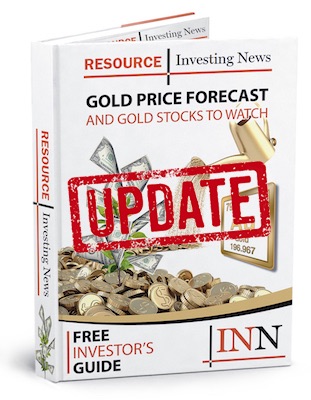By Amanda Kay
For investors looking to step into the gold space, there are a number of ways to invest in the yellow metal. One such way is through investing in gold futures, which is a common investing strategy among many commodities.
Putting it simply, futures can be defined as a financial contract between an investor and a seller. The investor agrees to purchase an asset from the seller at an agreed-upon price on a date set in the future.
In 1972, the Chicago Mercantile Exchange (CME) launched futures trading in seven currencies, but it wasn’t until 1974 that the first gold futures contract was traded on the COMEX exchange New York. Since then, gold futures have continued to grow in popularity as an investment strategy within the sector.
Gold futures investing
Similarly, gold futures follows the same structure as mentioned above, although there’s a slightly more in-depth approach.
Gold futures give investors the opportunity to trade gold without having to pay the full amount right away. An agreement is made between the two parties, including the price and weight of gold, and a delivery date–set in the future–is decided.
In other words, gold futures can be described as contract in which an individual agrees to take the gold at an agreed date by making an initial payment, with an agreement set in place to complete the payment.
A Daniels Trading publication notes that gold futures are offered in 100 ounces, 33.2 ounces and 10 ounces, and are an “alternative to bullion coins, mining stocks and leveraged bullion dealers.”
Where they are traded
In the US, gold futures can be traded at the New York Mercantile Exchange (NYMEX) at a contract size of 100 troy ounces and are quoted in US dollars per ounce. For example, $1 equals $100 per contract, with a minimum price fluctuation of 10 cents, which equals $10 per contract.
Typically, NYMEX’s contact months include February, April, June, August, October and December, with trading closing on the third last business day of the delivery month.
Another one is the Tokyo Commodity Exchange (TOCOM), with a contract size of 1000 grams and quoted in yens per gram.
As of July 10, 2017, London Metal Exchange (LME) launched its gold and silver futures trading. Since then it’s reported high volumes of trading futures on the exchange.
Rewards and risks
Like many things, there are rewards and risks to gold futures investing, however they may not necessarily apply to everyone. Still, it’s important for investors to use their own discretion when making a decision.
That being said, here are some tips for investors to keep in mind when considering gold futures.
Rewards of gold futures investing
- First off, the futures’ price is trackable, and it allows investors to pay a certain amount when the deal is made, while paying the remaining amount on the agreed-upon date;
- On that note, if investors are able to sell quickly, it’s suggested they will never pay for all the gold they purchased. Rather, the investor will likely pay two percent up front, while any loss will be adjusted on a down-payment and paid back in net;
- Tracking the worth of a futures contract is easy, simply by following along with the exchange price;
- Investors don’t need to keep their gold futures stored anywhere–at least not right away.
Risks of gold futures investing
- The gold futures market can be volatile, which means there is the possibility for markets to collapse;
- On that note, the gold price is constantly fluctuating. This means that an investor may lose money if there is a large drop in the price from the time the agreement is made to the date of delivery;
- Similarly, gold futures have a “built in” price differential, which can skew its true value. For example, if an investor purchases a future at $1.50 above the gold price 30 days before closing, the future’s value will drop approximately $0.05 per day until the closing date;
- Default risk–which means someone may be entitled to a profit but can’t collect it.
Why gold futures?
Of course, while there are high rewards and high risks with gold futures investing, they are certainly not for everyone. That being said, the CME Group notes that they “provide global gold price discovery and opportunities for portfolio diversification.”
CME further adds that there are ongoing trading opportunities associated with gold futures, all while being an alternative investment opportunity from stocks, coins, and gold bullion.
Would you invest in gold futures? Let us know in the comments below.
Don’t forget to follow us @INN_Resource for real-time news updates.
Securities Disclosure: I, Amanda Kay, hold no direct investment interest in any company mentioned in this article.
The post What are Gold Futures? appeared first on Investing News Network.
From:: Investing News Network

